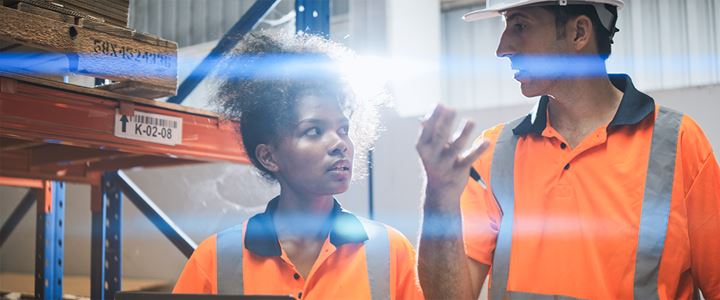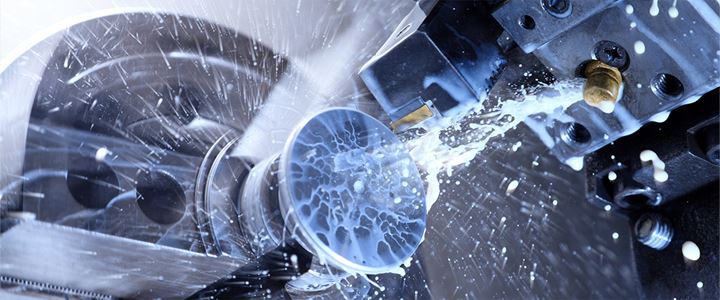Drivers for mergers and acquisitions in the manufacturing sector
Favourable market conditions
Some experts are predicting record quarters for manufacturing M&A, of a scale not seen since the financial crash of 2008.2 This is largely due to manufacturers shifting their focus towards retaining liquidity3 and a cash rich market. With significant M&A funds in the hands of ambitious companies, private equity investors2 and special purpose acquisition companies.1Strategic growth and operational resilience
Some manufacturers see acquisition as a means to drive growth, accelerate strategic plans, or strengthen operational resilience post-COVID.2 There are plenty of examples of deals driven by these operational and strategic imperatives. For instance, in May 2020 commodity chemicals company, Huntsman Corporation, completed the acquisition of CVC Thermoset Specialties in order to grow its specialty advanced materials portfolio. Similarly, in February 2020, shared private aviation company Surf Air Inc. acquired online aviation marketplace BlackBird Air Inc. as a means to simplify the consumer experience and reach more customers via the internet.3
Accelerating technological transformation
The ongoing shift to an Industry 4.0 model i.e. the technological transformation of manufacturing through the use of interconnectivity, automation, machine learning, and real-time data4 is also a significant factor driving M&A in the manufacturing sector. Here, manufacturers are pursuing acquisition as a means to accelerate technological transformation across all areas of the business, from procurement and production to delivery, with a particular focus on technologies such as 3D printing, automation, and access controls.3
Of course, every deal is subject to risk, which is why detailed planning, risks assessment and thorough due diligence is so important in any deal.
Risks in manufacturing mergers and acquisitions
There is a wide range of risks that can derail a deal, or destroy value for the acquirer post completion. This includes risks common to most M&A activity, as well as emerging risks associated with the technological transformation seen in the manufacturing sector.
Clearly, manufacturing M&A risk is a complex area, so the below gives just a flavour of the various risk areas. Independent advice is crucial to identifying the full range of risks associated with specific deals. However, broadly speaking some of the key risk areas to consider include5:
- Financial risks: The risk that the target company’s trading position is not as strong as believed, that could be due to reporting errors, unreasonable assumptions linked to financial projections, debt, working capital, and a whole array of other issues.
- Taxation risks: Issues like historical income tax liabilities, unconventional taxation regimes, and tax carryforwards can all create an M&A risk.
- Legal risks: The risks posed by historical, current, or potential legal issues and litigation.
- Environmental risks: These risks include those associated with previous environmental audits, hazardous substances, pollution, regulatory compliance, potential liabilities, and ongoing investigations.
- Operational risks: For instance the risks associated with fluctuating manufacturing yield, production line equipment and technology, production backlogs and much more.
- Technology and IP risks: An emerging risk area related to the increased use of technology in manufacturing. These issues include IP ownership, technology licences, use of open source technology in proprietary software, as well as ownership and protection of proprietary designs and processes.
- Insurance risks: Potential concerns here include adverse claims histories, ongoing claims, insufficient or restrictive cover to name a few.
- HR risks: Risks associated with employment contracts and practices, ongoing disputes, and potential historical liabilities.
- Customer risks: Including risks ranging from client contracts, historical warranties, and over-reliance on key clients, to client retention risks post-deal.
- Strategic risks: The risk that the acquired company will not represent as strong a strategic fit with the buying business as first assumed.
- Supply chain risks: For instance risks related to material and component supply contracts.
- Cyber risks: Security risks that could leave the business at risk of cyberattacks and data breaches, as well as any historical incidents that could create future liabilities.
Identifying and managing mergers and acquisitions risks
The sheer array of risks that impact on M&A in manufacturing, and their potential to destroy value, demands a thorough approach to managing and mitigating those risks.
Due diligence is clearly vital and you should investigate all the relevant risks in detail, with close involvement from professional advisers. The process commonly includes a range of different due diligence processes and experts, spanning administrative, financial, asset, HR, environmental and insurance. The aim, ultimately is to identify risks and mitigate them, either through deal renegotiation, warranties provided by the seller, or through specialist insurance products6 such as M&A insurance.
Mitigating mergers and acquisitions risk in manufacturing
A conversation around M&A insurance can help to answer difficult questions about risk allocation and streamline negotiation around the ownership of unknown risks. Such as those issues related to third party licencing, cap tables, forced divestures and innocent breach of warranty by acquired management teams.
Warranty and Indemnity (W&I) insurance covers financial losses arising from a breach of warranty given by the seller to the buyer in the sale agreement. W&I is typically used to bridge the gap between buyer and seller requirements in an M&A transaction negotiation; or to navigate roadblocks in negotiations.
Insurance solutions are also increasingly used to deal with known, contingent issues, for instance, a tax position that is a matter of interpretation and where there is a risk it will be challenged by tax authorities in future. In these cases, tax insurance is used as a means of ring-fencing these risks so that neither buyer nor seller has to take them on. This can avoid the need for a seller to provide contractual protection to the buyer; or the buyer to seek a price reduction.
Similarly, IP insurance is commonly used to manage known IP risks in tech M&A, and may have a role to play in an increasingly technology-driven manufacturing sector. IP insurance can, for instance, help to reduce risks associated with future legal challenges to the target’s IP ownership, and to help fund litigation to enforce IP rights in the event of future infringement by a 3rd party.
Working closely with Marsh UK, we have access to a dedicated Private Equity and Mergers and Acquisitions Services practice to help ensure that transactions are executed nimbly, accurately, and with the right risk mitigation protocols. Solutions include:
- Mergers and acquisitions risk and insurance due diligence.
- Lender due diligence and advisory.
- Infrastructure project risk management and due diligence.
- Transactional risk solutions tailored to address issues such as warranties and indemnities, tax opinions, existing litigation, and environmental issues.
- Fund-level risk solutions such as management and professional liability.
- Portfolio strategies for purchasing and cost savings.
Get in touch with the manufacturing team to learn more.
Sources:
1. https://www.pwc.com/gx/en/services/deals/trends/industrial-manufacturing-automotive.html
2. https://www.bdo.co.uk/en-gb/insights/advisory/mergers-and-acquisitions/m-a-activity-in-manufacturing-is-at-record-levels
3. https://www.financierworldwide.com/ma-in-the-manufacturing-sector#.YRZQVcpKiM8
4. https://www.epicor.com/en-uk/resource-center/articles/what-is-industry-4-0/
5. https://www.forbes.com/sites/allbusiness/2019/03/27/comprehensive-guide-due-diligence-issues-mergers-and-acquisitions/?sh=20c5efde2574
6. https://www.marshcommercial.co.uk/articles/technology-mergers-and-acquisitions-risks/










